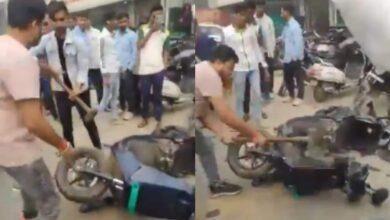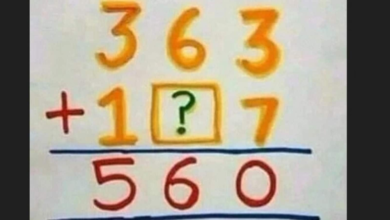Beyond Baahubali 2: A fan retraces the joy of watching a typical Rajamouli film

Four months after I turned 18, little did I know that SS Rajamouli, who had made his directorial debut in 2001 with an action drama Student No 1 starring NTR Jr, was going to alter the way I watch movies.
Till that point in time, like every other movie buff who grew up in Andhra Pradesh, I was in awe of action dramas, especially those starring Chiranjeevi and Balakrishna.
I remember watching films like Gang Leader, Samarasimha Reddy, Baasha, Gharana Mogudu in the 90s and being aware of the hype surrounding these films. But it was SS Rajamouli’s Simhadri which made me look at action dramas from a fresh perspective. And to this day, very few filmmakers have come close to turning their films into an outburst of delirious joy like SS Rajamouli has managed to do since 2003.
If you’ve stuck to watching Hindi films all your life and Eega (Makkhi) was your introduction to the world of SS Rajamouli, then you have clearly missed out on a whole lot of stuff which turned him into one of the finest storytellers in Telugu cinema, long before he became a revered figure across the nation.
You’ve missed the sense of wonder when Prabhas smashes the doors in the iconic interval scene in Chatrapathi(2005) to warn a politician to not exploit his people in the port area in Vizag. You’ve missed the adrenaline rush of witnessing Ram Charan fight against Dev Gill in the salt flats of Rann Of Kutch in Magadheera (2009).
You’ve missed a terrific scene in Vikramarkudu(2006) where Ravi Teja takes on a corrupt MLA and his son to restore the honour of the police department in the hinterlands of Madhya Pradesh. Some of these films have been dubbed or remade in Hindi, but it’s a million dollar question if it had the same impact on the viewers.
It’s been 16 years since SS Rajamouli made his debut and if we could put his style of storytelling into perspective, then it would resemble a bell curve.
And the high that you experience, especially after an hour into the story, all the way till the final 15 minutes before the film ends, is what makes every SS Rajamouli’s film a memorable experience.
In other words, usually you would watch films, but when it comes to a SS Rajamouli film, you experience it. Period.
No other filmmaker has used the ‘Baasha’ template with such precision and conviction like Rajamouli has over the years.
For the uninitiated, Rajinikanth’s Baasha was instrumental in popularising the concept of flashbacks and giving dual shades to the protagonist. And it’s a recurring theme in most Rajamouli’s films.
In Simhadri, NTR Jr plays a do-gooder who works for Ram Bhupal Varma (Nassar), but in the flashback, he’s shown to be a messiah of people in Kerala who were being tormented by a don named Bhai Saab. In Vikramarkudu, Ravi played dual roles, including that of a petty thief and a sincere police officer. In Magadheera, Ram Charan is a bike racer, but when the story cuts to a flashback, he’s a warrior.
Although his recent films like Maryada Ramanna (remade in Hindi as Son Of Sardaar) and Eega (Makkhi) didn’t have flashbacks as a medium to explore the backstory of the principal characters, both the films had all that you expect from a Rajamouli’s film.
There’s a pattern. Explain the core idea of the film in the first 10 minutes and then introduce the lead characters and the antagonist. And then, it’s all about bringing together few characters to a flash point, which leads to an explosive interval bang, followed by a 40-60 mins of emotional drama which is meant to overwhelm you.
Baahubali too follows a similar pattern like most other films of the director, but this time, it feels slightly different. Unlike his previous films, which were mostly 150-170 minutes long, Baahubali was conceived as a 5-hour long epic drama. It was later split into two parts.
In a way, the ending of Baahubali: The Beginning would probably be the mid-point of the full story and it’s probably safe to say that we haven’t seen anything yet, going by his track record so far.
The ‘bell curve’ of Baahubali, so far, isn’t really a curve, so to speak. We are yet to hit the ‘peak’ of the curve and quite clearly, the best is yet to come.
No discussion about Rajamouli’s film is complete without talking about the memorable characters from his films, especially the antagonists.
In a recent interview when Rajamouli was asked what really worked in favour of Baahubali, he said, “We could talk about its visual grandeur and its sound, but what really worked in its favour, in my opinion, are its characters. Baahubali : The Beginning released back in mid 2015, but people still remember Sivagami, Baahubali, Bhallaladeva, Bijjaladeva, Kattappa, Devasena, and Avanthika. Everything that they do or say has a profound impact on the viewers.”
While Baahubali had epic characters in every sense, Rajamouli’s 2012 film Eega had Sudeep, who knocked it out of the park with his portrayal of a villain who’s tormented by the fly. Even in a comedy film like Maryada Ramanna, Rajamouli tilted the odds in favour of the villains Ramineedu (Nagineedu), Mallasuri (Supreeth) and Baireddy (Prabhakar).







